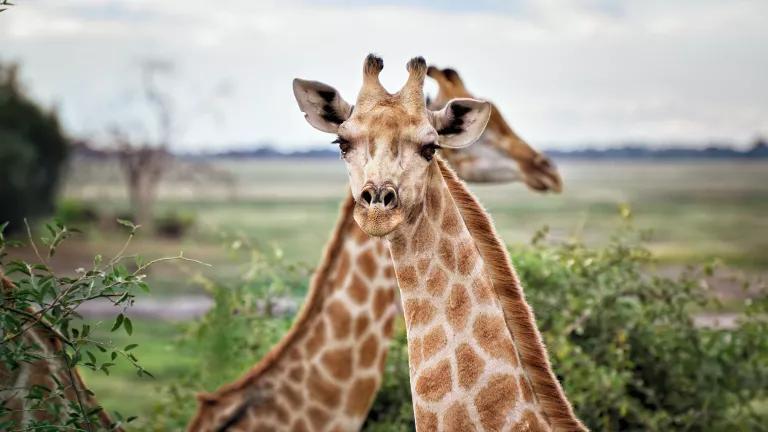NRDC & Allies Prompt Trump Administration to Consider Giraffe Protections
Thanks to a lawsuit filed by NRDC and partners, giraffes are one step closer to receiving federal protections. But the fight continues until they are officially listed under the Endangered Species Act.

Marja Schwartz/Getty Images
We received exciting news today: The U.S. Fish and Wildlife Service found that the petition submitted by NRDC and allies in 2017 to list giraffes under the Endangered Species Act “presented substantial information on potential threats” showing that the listing "may be warranted" (otherwise referred to as a positive 90-day finding).
In April 2017, NRDC joined the Center for Biological Diversity, the International Fund for Animal Welfare, the Humane Society of the United States, and Humane Society International to send a petition to the Fish and Wildlife Service (FWS), asking it to list giraffes under the Endangered Species Act. Under law, the FWS had 90 days to determine whether the listing “may be warranted” and, if so, another nine months to determine whether the listing “is warranted.” When the agency didn’t respond for over a year, we finally sued in December 2018, which prompted today's announcement. The finding delivered today should have been made in August 2017—90 days after we filed our petition!
As with many imperiled species, there is no time to waste when it comes to giraffes. They are undergoing a “silent extinction,” having declined 40 percent over the past 30 years, though few seem to know this. In fact, there are fewer giraffes left on this planet than African elephants—less than 100,000 remain. The causes of this drastic decline include loss of habitat, commercial overutilization, and severe poaching for bushmeat, bones, tail hair, and other parts.
Giraffes are also hunted for sport—likely a key reason the FWS dragged its feet (bringing to mind another lawsuit we’re fighting). Indeed, giraffes are a favorite target of trophy hunters, with U.S. hunters importing 3,744 trophies between 2006 and 2015. Giraffes are also plagued by a burgeoning international trade in their parts (e.g., bone, skin, hair, feet, tails), with the United States serving as a major importer of giraffe bone carvings (21,402) and skin pieces (3,008) over the past decade.
It’s clear that current regulatory mechanisms are failing to protect giraffes. Giraffes aren't even protected under the Convention on International Trade in Endangered Species (CITES)—a travesty we're trying to correct at the CITES meeting next month. As a significant importer of giraffes and their parts—and as a global leader in conservation—the United States can make a large and positive impact on the international trade of the species. An endangered listing for giraffes will help the species in several ways, including better regulating U.S. commercial import/export of giraffe parts, sport-hunted trophies, and live giraffes. It will also institute greater controls over U.S. interstate trade in giraffe trophies and parts, which appears to be growing, with at least 1,224 giraffe parts found available for sale online in America in less than one month.
Of course, this isn't a done deal yet. Next, the FWS will take a closer look at the status of and threats to giraffes by initiating a status review and making a final determination within the next nine months. And there's still a chance it could decide not to protect giraffes under the ESA. But the science and trade data make it clear giraffes deserve ESA protections. We hope the administration will be swayed by these factors—not the NRA and trophy hunters.



